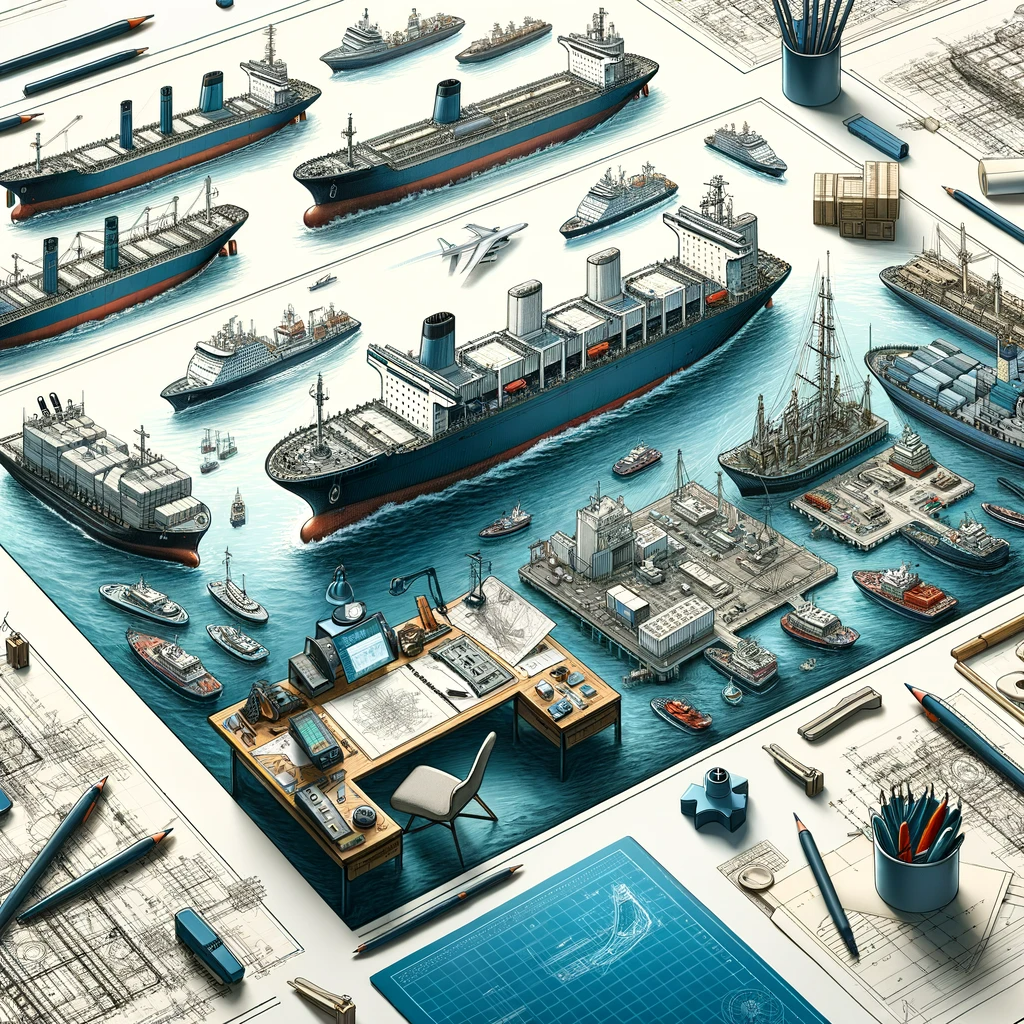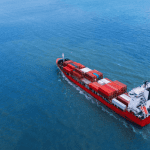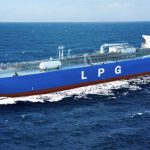


How to Find the Right Ship Design for Your New Shipbuilding Project?
The critical importance of Ship Design in any new shipbuilding
The art of shipbuilding is as ancient as it is modern, continuously evolving with technological advancements and changing global needs. At the heart of this process lies the critical task of ship design – a meticulous blend of engineering, art, and foresight. The right ship design not only determines the feasibility and efficiency of the shipbuilding project but also defines the vessel’s operational capabilities and longevity.
In this expansive world of naval architecture and maritime engineering, the significance of selecting an appropriate design cannot be overstated. It’s a decision that affects every aspect of a ship’s life, from its construction to its operational efficiency, revenue potential, safety, and environmental impact. As such, finding the right ship design for a new shipbuilding project is a multi-faceted process, involving a thorough understanding of the ship’s intended purpose, technical requirements, and the nuances of modern naval architecture.
Step 1: Defining Operational Requirements
The foundational step in any shipbuilding project is to outline the operational requirements of the vessel. This involves a deep dive into the intended use of the ship, which directly influences its design and construction.
- Vessel Mission and Type: The mission of the vessel is its raison d’être. Is it a cargo carrier, a luxury cruise ship, an icebreaker, or an offshore support vessel? Each type of mission demands specific design features. For instance, a container ship needs a design optimized for maximum cargo space and efficient loading/unloading operations, whereas a cruise ship focuses on passenger comfort, amenities, and safety.
- Cargo Capacity and Type: For cargo vessels, the capacity and type of cargo are vital. Bulk carriers, oil tankers, and container ships, for example, have vastly different design requirements. The design must accommodate the weight, size, and nature of the cargo, ensuring safe and efficient transport.
- Speed and Fuel Efficiency: Speed requirements influence the design of the hull and the propulsion system. High-speed vessels require more powerful engines and a hull design that reduces drag. Fuel efficiency is also a critical factor, especially in light of rising fuel costs and environmental regulations.
- Passenger Capacity and Comfort: For passenger ships, the capacity and level of comfort are key considerations. This involves not just the number of cabins but also the layout of public spaces, amenities, and safety features.
- Additional Operational Considerations: Other factors like the range (the distance the ship can travel without refueling), endurance (how long it can operate without resupply), and specific navigational requirements (e.g. ice navigation) are also crucial.
Step 2: Defining Outline Technical Specifications
Once the operational requirements are clear, the next step is to translate those into initial technical specifications. This is generally a 2-page document that defines the outline specification of the vessel and includes the most important elements that – as a minimum- need to be met in the design (vessel dimensions, hull type, class notation, main machinery, auxiliary machinery, equipment, passenger and accommodation capacity, cargo type and tank capacity, any special equipment or special duties that the vessel needs to be able to achieve ). These outline specifications need to be adhered to by any detailed design that will be proposed or made. In some cases, certain elements in the outline specs can be included in a defined range or as optional if there is no restriction allowing for designer input (i.e. length of the ship can be provided as a range from for example 80 to 90 meters. Also, for example, hull type can be mentioned as optional (for example: steel or aluminum) if the decision can be flexible based on optimum design requirements). The process of developing outline specifications bridges the gap between the conceptual and the practical, turning operational needs into technical blueprints. We will cover some sections that are typically included in the outline specifications:
- Vessel Size and Type: The size of the vessel is determined based on its intended use, cargo capacity, and the waters it will navigate. The type of ship – be it a tanker, bulk carrier, container ship, or passenger vessel – will have predefined design templates, which are then customized based on specific requirements.
- Cargo Handling Capabilities: The ship’s design must facilitate efficient cargo handling. This includes considerations for cranes, conveyor systems, or other loading/unloading mechanisms.
- Accommodation Size and Standards: For crew and passenger ships, the size and standard of accommodations, including living quarters, mess halls, and recreational areas, are integral to the design.
- Special Machinery and Equipment Needs: Depending on the ship’s function, it may require specialized equipment like dynamic positioning systems, ice-breaking capabilities, or advanced navigation systems.
Step 3: Shortlisting Designers and Comparing Designs
The selection of a naval architect or ship designer is a pivotal decision in the shipbuilding process. This choice can shape the future of the entire project, influencing everything from construction feasibility to operational efficiency.
- Criteria for Selecting Designers: Experience is paramount. Look for designers who have a proven track record in the type of vessel you’re building. Review their portfolios for designs that align with your operational requirements and technical specifications.
- Methodologies for Comparing Designs: Evaluate designs based on several criteria, including functionality, efficiency, adaptability, and compliance with safety and environmental regulations. Consider how each design meets your specific operational needs.
- Importance of Visiting Existing Vessels and Feedback: If possible, visit vessels built on similar designs. This firsthand experience can provide invaluable insights. Additionally, gather feedback from operators or owners of these vessels to understand the practicalities and performance of the designs in real-world conditions.
- Evaluating Track Record and Reliability: Assess the designer’s history of delivering projects on time and within budget. Their ability to handle challenges and provide innovative solutions is also crucial.
Step 4: Choosing the Right Shipyard
The shipyard where your vessel will be constructed plays a critical role in the success of your project. It’s not just about construction; it’s about bringing the design to life.
- Shipyard Experience: A shipyard experienced in building the type of vessel you require is more likely to understand the nuances of that specific design. They are also more likely to have the necessary infrastructure and skilled workforce.
- Quality, Cost, and Timeline Considerations: Evaluate the shipyard’s reputation for quality. Compare costs and assess the value for money. Consider their record of completing projects within the proposed timeline.
- Post-Delivery Support: A shipyard that offers robust after-sales support, including maintenance and repair services, adds long-term value to your investment.
Before awarding the shipbuilding contract to a shipyard, you will probably have developed a detailed specification that converts the outline specs into a detailed document that includes all the details about the vessel’s design, technical specification, general arrangement, and construction specs. The document is typically 40 to 100 pages or more depending on vessel type. This document allows the shipowner to arrive at an expectation of what the end product will be allows the owner to address any changes in the design/specs before the contract implementation starts, and also allows the shipyard to properly allocate the cost of the project within the final price.
Conclusion
Selecting the right ship design for a new shipbuilding project is a multifaceted process that demands careful consideration of various factors – from operational requirements and technical specifications to designer selection, shipyard capabilities, and effective project management. Each step is interconnected and plays a vital role in the overall success of the project. By thoroughly navigating these aspects, shipowners and stakeholders can ensure that the new ship not only meets but exceeds expectations, setting a new standard in maritime engineering and innovation
Add a comment Cancel reply
Comments (0)
Categories
- Resources (31)
Recent Posts
About us


Related posts


How to Ship Bulk Cargo Through Bulk Carriers: A Comprehensive Guide

How to Ship LPG: A Comprehensive Guide for Charterers?






